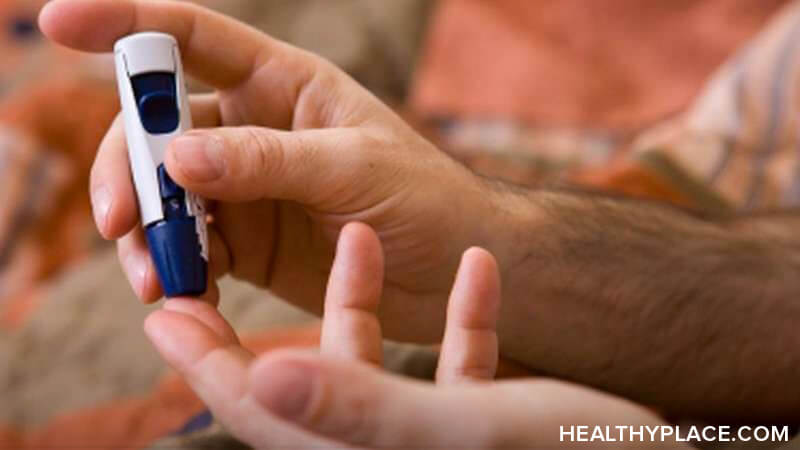How to Diagnose Diabetes: Criteria, Tests for Diabetes Diagnosis

A diabetes diagnosis must come from a doctor or other qualified medical professional because of the nature of the illness. Diabetes is a disease in which, because of problems with the hormone insulin, glucose (sugar created during digestion) can’t enter the cells of the body but instead stays in the bloodstream. Blood sugar builds to unhealthy levels, a condition called hyperglycemia. The only way to know your blood sugar levels is through blood tests in a medical lab ordered by your doctor. Let’s look at the types of tests used for a diabetes diagnosis.
Types of Tests Used to Diagnose Diabetes
A common question is, How do they test for diabetes? Doctors order different types of lab tests to diagnose type 1 and type 2 diabetes ("What Is the Difference Between Type 1 and Type 2 Diabetes?"). These include:
- Glycated hemoglobin test (more commonly referred to as the A1C)
- Random (or casual) plasma glucose test
- Fasting plasma glucose test (FPG)
- Oral glucose tolerance test (OGTT)
While all tests measure hyperglycemia, each one has a slightly different procedure and diabetes diagnosis criteria, or an acceptable range of blood sugar levels.
Diabetes Diagnostic Tests Explained
Knowing about these tests and diabetes diagnostic criteria can help you mentally prepare for diabetes testing and thus reduce anxiety about the process.
The A1C examines how much blood glucose has been attached to hemoglobin over the past two to three months. This is different from other tests. Most tests measure the amount of glucose in the bloodstream during the test. An A1C test identifies trends by looking at how much glucose is attached to hemoglobin, a protein in red blood cells. The result is measured in percentages.
In the A1C test to diagnose diabetes:
- A sample of your blood is drawn
- You don’t have to fast (go without eating or drinking)
- You don’t have to drink a glucose solution
- If the result is 6.5 percent or higher after two tests, a diabetes diagnosis is given
- A result of 5.7 and 6.4 percent indicates prediabetes
- Anything below 5.7 percent is considered normal
The random plasma glucose test measures the amount of glucose in the blood at the time of the test. This test:
- Involves the drawing of a blood sample
- Is done any time of day
- Is random in that it isn’t planned around the timing of meals.
- Diagnoses diabetes in the blood sugar level is 200 mg/dL (milligrams per deciliter) or higher
The fasting plasma glucose test is another test that measures blood sugar levels. In this test,
- Blood is drawn after fasting (usually first thing in the morning)
- If the blood test shows that the blood glucose level is 126 mg/DL or higher, a diabetes diagnosis is given
- A reading between 100 mg/dL and 125 ml/dL indicates prediabetes
- Lower than 100 mg/dL is normal
The oral glucose tolerance test is another test to determine if hyperglycemia is present and high enough for a diagnosis of diabetes. In the OGTT,
- After 8 hours of fasting, usually overnight, blood is drawn to measure the fasting blood sugar level
- The person being tested drinks a glucose solution
- Blood is drawn periodically over the next two hours to see how blood glucose levels react
- At the end of the test, a blood glucose level of 200 ml/dL leads to a diabetes diagnosis
- Blood sugar levels between 140 and 199 mg/dL indicate prediabetes
- Healthy blood sugar levels are under 140 mg/dL
The glucose challenge test and glucose tolerance test are used to diagnose gestational diabetes, or diabetes that a woman develops during pregnancy and ends within six weeks after delivery. This test is routinely given during a prenatal check-up, typically during weeks 24-28 of pregnancy.
- The glucose challenge test happens first
- The woman drinks a glucose solution
- Blood is drawn one hour later to measure blood sugar levels
- If the reading is above 126 mg/dL, a follow-up test is needed
- The follow-up glucose tolerance test is the same as before but with a solution containing a higher concentration of glucose
- Blood sugar levels are checked hourly for three hours
- If at least two of the hourly readings are above 126, gestational diabetes is diagnosed
There is one more important answer to the question How do you diagnose diabetes? The answer? More than once. As with any type of medical testing, there can be interferences that affect the results. Some prescription medications, being under extreme stress, and even trauma can influence test results. Your doctor will likely verify your prescription medications as well as talk with you about lifestyle factors before ordering blood glucose tests.
In many cases, if a test indicates hyperglycemia, it’s repeated on a second day to ensure that a positive result for diabetes is consistent and wasn’t an error. Then, if you are given a diabetes diagnosis, you can begin to treat diabetes immediately and take charge of your health and wellbeing ("What Are Diabetes Treatment Guidelines?").
APA Reference
Peterson, T.
(2022, January 3). How to Diagnose Diabetes: Criteria, Tests for Diabetes Diagnosis, HealthyPlace. Retrieved
on 2025, November 29 from https://www.healthyplace.com/diabetes/main/how-to-diagnose-diabetes-criteria-tests-for-diabetes-diagnosis



